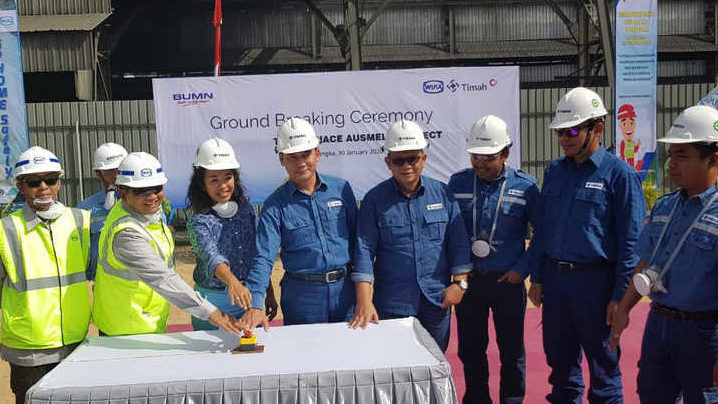PT Timah, the world’s second largest tin producer, broke ground on the construction of its new smelter today, 30 January 2020. The smelter will use Ausmelt technology and will have a capacity of some 40,000 tonnes. The company estimates that the new smelter will be operational by the middle of 2021.
In 2018, PT Timah was the world’s second largest tin producer and the exported the most tin globally. However, the company aims to take the top spot, currently held by Yunnan Tin, according to construction partner Wika’s Director of Operations, Bambang Pramojo.
PT Timah currently operates two smelters, located in Kundur, Riau and Mentok, Bangka Belitung. The smelters have a combined capacity of around 54,000 tonnes per year, but in 2018, the company produced some 33,500 tonnes of refined tin. Part of the company’s growth strategy has involved upgrading smelters to increase capacity enable processing of lower grade ores.
In 2019, PT Timah added fuming facilities to its operations, which enable the recovery of metal from smelting slag. According to people close to the operations, PT Timah will recover around 2,000 tonnes of tin that would have been previously lost.
Yet the long-awaited upgrades to the Mentok smelter are likely to have the biggest effect on PT Timah’s tin production. Ausmelt technology reduces the losses of tin during the smelting process and enables more efficient processing. This will allow PT Timah to process lower grade tin from onshore deposits including its Batu Besi mine, which it began developing in late 2019.
Our view: There has been a shift away from traditional reverberatory furnaces as tin producers become more environmentally conscious. However, PT Timah’s desire to overtake Yunnan Tin, as well as preserve the long-term viability of tin resources in Indonesia, will have certainly played a part in the decision to upgrade smelting technologies. The company is likely to have made ground on both fronts, with increased production following the closure of private smelters and exploration activity increasing resources by 31% year-on-year in 2018.



